14 years one-stop China custom CNC machining parts factory
 479 |
Published by VMT at May 17 2025 | Reading Time:About 10 minutes
479 |
Published by VMT at May 17 2025 | Reading Time:About 10 minutes
Modern industries—from aerospace to architecture—demand high-performance metal components that are not only strong and precise but also adaptable to evolving designs. However, many businesses struggle to understand what metal fabrication truly entails. Misunderstandings around processes, technologies, and material choices can lead to project delays, budget overruns, or selecting the wrong manufacturing partner.
If you've ever faced confusion about the differences between sheet metal work, CNC machining, or welding—or you've been unsure how metal parts are custom-built for different industries—you’re not alone. The wide scope of metal fabrication, coupled with rapid advancements in technology, can make it difficult to grasp the entire picture. Without a clear understanding, it's easy to fall behind in quality, cost efficiency, or innovation.
That’s why this comprehensive guide to metal fabrication will break down the entire process in a simple yet professional way. Whether you're new to the concept or exploring ways to optimize your manufacturing projects, we’ll walk you through everything—from the historical evolution of fabrication to modern CNC machining services, key process steps, essential materials, types of fabrication, and real-world applications. Read on to gain clarity and make better-informed decisions for your business.
Metal fabrication is the process of designing, cutting, shaping, assembling, and finishing metal to create durable, functional components for a wide range of industries. It involves various methods—like welding, CNC machining, and forming—and is used to produce everything from structural beams to precision medical parts. This guide covers all key steps, technologies, materials, and applications involved.
Understanding the fundamentals of metal fabrication is essential for anyone involved in manufacturing, engineering, or product development. Whether you’re sourcing custom metal fabrication parts, exploring CNC machining services, or learning how modern CNC machining factories streamline production, this comprehensive guide will walk you through every critical aspect. From historical developments to advanced fabrication technologies, let’s explore how metal takes shape into precise, durable, and application-ready components.
Metal fabrication is the process of transforming raw metal materials into finished, functional parts or products through a series of industrial techniques. These techniques include cutting, bending, forming, welding, machining, and assembling. Metal fabrication is central to modern manufacturing and is used to create everything from structural components in buildings to intricate parts in electronics and aerospace equipment.
At its core, the metal fabrication process begins with the selection of raw materials—typically sheet metal, bars, or metal plates—followed by design and engineering using CAD (Computer-Aided Design) software. Once the design is finalized, the fabrication shop or CNC machining factory moves on to production, where different processes are applied depending on the complexity and function of the part. For instance, CNC machining is often employed for highly accurate cuts and complex geometries, while welding is used to join components together permanently.
The fabrication process can be used to produce custom metal fabrication parts in single units or in large-scale production runs. It is applicable across industries such as automotive, aerospace, construction, electronics, and medical devices. In addition to functional aspects, metal fabrication also allows for aesthetic and surface finishes, offering both durability and visual appeal.
Whether it’s a lightweight aluminum bracket or a heavy-duty steel beam, metal fabrication plays a vital role in enabling customized, high-performance components. Companies like VMT offer integrated CNC machining services and metal fabrication machining solutions, combining precision and flexibility to meet the most demanding industrial requirements.
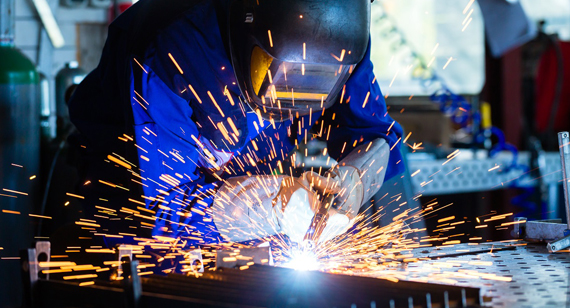
Metal fabrication may seem like a modern industrial marvel, but its origins trace back thousands of years. The techniques and technologies used today in CNC machining factories and metal fabrication services are the result of centuries of innovation, driven by human need for tools, structures, and machines. Understanding how metal fabrication evolved provides valuable context for the sophisticated methods used in modern production—from ancient forging to automated CNC systems used in today’s metal fabrication machining.
Ancient Origins
The history of metal fabrication begins in ancient civilizations where people first discovered how to manipulate metals like copper, bronze, and later iron. Around 4000 BCE, early smiths in Mesopotamia and Egypt began hammering and shaping soft metals for weapons, tools, and ornamental objects. With the invention of the forge and primitive smelting techniques, metals could be melted and poured into molds, marking the beginnings of casting.
Bronze, an alloy of copper and tin, became particularly important during the Bronze Age (around 3300–1200 BCE). Metalworkers developed basic fabrication processes such as cutting with chisels, joining with primitive fasteners, and shaping through hammering and annealing. Though rudimentary, these foundational methods laid the groundwork for the fabrication of increasingly complex metal fabrication parts.
Industrial Revolution: A Turning Point
The Industrial Revolution in the 18th and 19th centuries marked a seismic shift in the world of metal fabrication. Advancements in steam power, metallurgy, and mechanization transformed fabrication from small-scale blacksmithing into mass production. The introduction of machine tools—such as lathes, milling machines, and drill presses—allowed for faster and more consistent fabrication.
Steel became the dominant material thanks to the Bessemer process, which enabled large-scale steel production. Fabrication shops expanded rapidly, supporting booming industries like railroads, shipbuilding, and construction. This era laid the foundation for the modern CNC machining factory, where precision and efficiency became paramount.
20th Century: The Age of Automation and Innovation
The 20th century brought unprecedented innovation to metal fabrication. World wars spurred the need for rapid manufacturing of weapons, vehicles, and aircraft components, accelerating advancements in welding, forging, and machining. After WWII, the rise of industrial automation revolutionized fabrication.
The introduction of Computer Numerical Control (CNC) in the 1950s was a game changer. CNC machining allowed for precise, repeatable processes with minimal human error, especially in the production of intricate metal fabrication parts. Robotics, plasma cutting, and laser machining followed, further enhancing speed, accuracy, and scalability.
As demand for customized and complex components grew, CNC machining services became essential across industries, offering unmatched precision and flexibility.
21st Century: Advanced Technology and Customization
In the 21st century, metal fabrication has become a high-tech industry driven by digitalization, smart manufacturing, and global competitiveness. Modern CNC machining factories now use CAD/CAM software to create virtual models and tool paths before any physical work begins. Technologies such as 3D printing with metal, IoT-enabled machines, and AI-driven process optimization are now shaping the future of fabrication.
Customization is at the forefront, with metal fabrication services capable of producing everything from rapid prototypes to highly engineered products with complex geometries. Quality control is enhanced with real-time monitoring and non-destructive testing, ensuring consistency even in high-volume production.
As industries continue to demand lightweight, durable, and intricately designed components, the evolution of metal fabrication—from hand-forged tools to AI-integrated CNC machining—shows no signs of slowing down.
The metal fabrication process is a complex, multi-stage journey that transforms raw materials into precision-engineered parts or products. Whether you're working with a CNC machining factory or a small-scale fabrication shop, every project follows a structured workflow to ensure quality, accuracy, and efficiency. From selecting the right material to performing final assembly, each step in the metal fabrication process plays a vital role in achieving the desired outcome. Understanding these steps provides insights into how CNC machining services operate and how metal fabrication parts come to life.
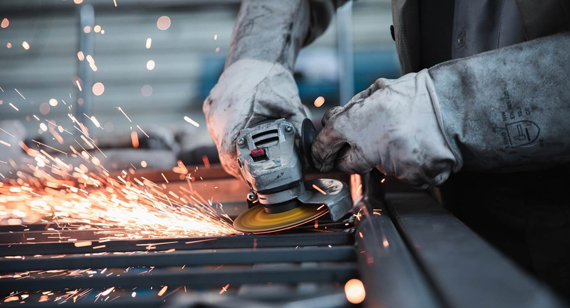
The metal fabrication process starts with choosing the appropriate raw material. The selection depends on several factors, including the application, environment, strength requirements, weight, corrosion resistance, and budget. Common materials used in metal fabrication include carbon steel, stainless steel, aluminum, brass, copper, and titanium. Each material offers unique properties that make it suitable for different uses—for instance, stainless steel for corrosion resistance, or aluminum for lightweight structural components.
Material selection is critical because it impacts not only the performance of the finished part but also the processes used during manufacturing. CNC machining services often guide clients through this decision, offering expert advice on material specifications based on project needs.
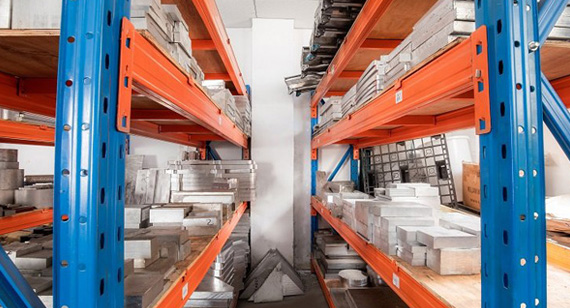
Design Phase
After the material is selected, the design phase begins. Engineers use CAD (Computer-Aided Design) software to create 2D drawings and 3D models of the final product. These digital blueprints provide detailed specifications including dimensions, tolerances, features, and finishing requirements. This step ensures that all aspects of the metal fabrication parts are precisely defined and ready for prototyping or production.
Design validation and optimization are also performed in this phase to identify potential issues early. Simulation tools may be used to test structural integrity, heat resistance, and other factors. CNC machining factories rely on this phase to create production-ready files that are accurate and repeatable.
Prototyping Phase
Before full-scale manufacturing begins, a prototype is often created to evaluate form, fit, and function. This step helps avoid costly mistakes and ensures that the design meets all performance criteria.
Importance of Sheet Metal Prototyping
Sheet metal prototyping is essential when working with flat metal stock to create enclosures, brackets, panels, and other components. It allows manufacturers to test bending angles, hole placements, and joint fitment before committing to mass production. Prototypes are also used to gather feedback from clients and make necessary adjustments.
Today’s CNC machining services often incorporate rapid prototyping methods such as 3D printing, laser cutting, and CNC milling to quickly produce accurate test parts. These techniques reduce lead times and help manufacturers meet tight deadlines while maintaining precision.
Programming Phase
Once the prototype is approved, the next step involves translating the CAD design into machine-readable code through CAM (Computer-Aided Manufacturing) software. This process defines the toolpaths, speeds, feed rates, and cutting sequences that CNC machines will follow.
Programming ensures that every cut, hole, and contour is executed with precision. Skilled CNC programmers optimize the machining strategy to minimize material waste, reduce cycle time, and extend tool life. At this stage, simulation tools are also used to detect possible collisions or tool errors before actual machining begins.
Manufacturing Process
With the code in place, fabrication moves to the production floor. CNC machining, laser cutting, welding, punching, bending, and forming are just some of the processes used to shape the raw material into finished parts. Depending on the complexity of the design, several operations may be performed on different machines.
CNC machining factories use high-speed, multi-axis machines that produce parts with extremely tight tolerances. Automation ensures consistency, repeatability, and scalability. This phase represents the core of metal fabrication machining and demands high technical accuracy and quality control.
Finishing
Once the parts are manufactured, they go through finishing processes to improve appearance, surface quality, corrosion resistance, and durability. Common finishing techniques include powder coating, anodizing, painting, polishing, sandblasting, and plating.
Finishing not only enhances aesthetics but also protects the metal from environmental damage. It is often a critical requirement in industries such as aerospace, medical devices, and electronics where high-quality surfaces are essential.
No part leaves a CNC machining factory without passing through rigorous quality inspection. Using tools like calipers, micrometers, CMMs (Coordinate Measuring Machines), and laser scanners, quality control teams verify that the parts meet dimensional and tolerance specifications.
Inspection ensures that each component is free from defects and matches the original design intent. Many CNC machining services are certified to ISO 9001 or other industry standards, which mandate strict quality control procedures.
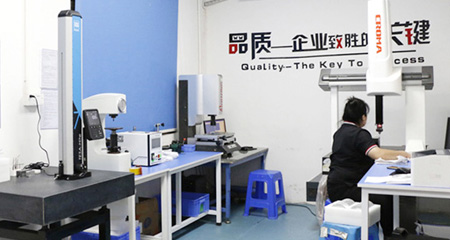
Assembly Services
The final step in the metal fabrication process is assembly. This involves joining multiple fabricated components using welding, fastening, or adhesive bonding techniques. In some cases, electronic or mechanical subcomponents are also integrated during this stage.
Assembly services offered by CNC machining factories add value by delivering ready-to-use products, reducing the need for additional handling by the client. From simple structures to complex machinery, efficient assembly ensures the final product performs as intended.
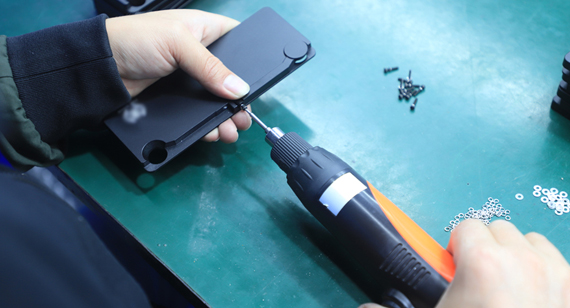
The success of any metal fabrication project—whether it involves simple brackets or complex aerospace components—hinges on a number of critical parameters. These variables affect everything from cost and timeline to quality and function. For CNC machining factories and fabrication professionals, understanding and optimizing these parameters ensures that the final metal fabrication parts meet design specifications, perform reliably in application, and are cost-effective to produce. Below is a breakdown of the most important factors that influence metal fabrication machining projects.
Material selection is one of the most foundational parameters in metal fabrication. Different metals offer unique combinations of strength, machinability, corrosion resistance, thermal conductivity, and cost. Commonly used materials include:
Choosing the correct material impacts not only performance but also the compatibility with machining and fabrication processes.
Design Complexity
The complexity of the part's geometry directly affects machining strategies, setup time, and cost. Intricate features, such as undercuts, internal cavities, and tight corners, may require specialized tools, multi-axis CNC machining, or additional processes like EDM or 3D printing for prototyping.
Designers working with CNC machining services must account for these challenges early by simplifying geometries where possible and aligning designs with the strengths of CNC and fabrication capabilities. Complexity also impacts fixture design and inspection strategies.
Manufacturing Processes
The choice of manufacturing process—such as CNC machining, stamping, bending, laser cutting, or welding—affects the fabrication method, timeline, and achievable tolerances. CNC machining offers high precision and flexibility, making it ideal for custom or low-volume production. On the other hand, stamping and forging are better suited for high-volume runs of standardized parts.
The selected process must match the material properties, part geometry, and intended production scale. Efficient process planning also minimizes waste, rework, and lead times.
Tolerance Grades
Tolerances define the allowable deviation from the nominal dimensions and are critical for ensuring fit, function, and assembly. Tighter tolerances often require advanced CNC machines, slower processing speeds, and more rigorous inspection—all of which increase cost.
Common tolerance grades include:
Choosing the right tolerance grade is a balance between function and manufacturability.
Surface finish affects the aesthetics, corrosion resistance, wear resistance, and cleanliness of a part. Different applications require different finishes:
The chosen finishing method must be compatible with both the material and the end-use requirements.
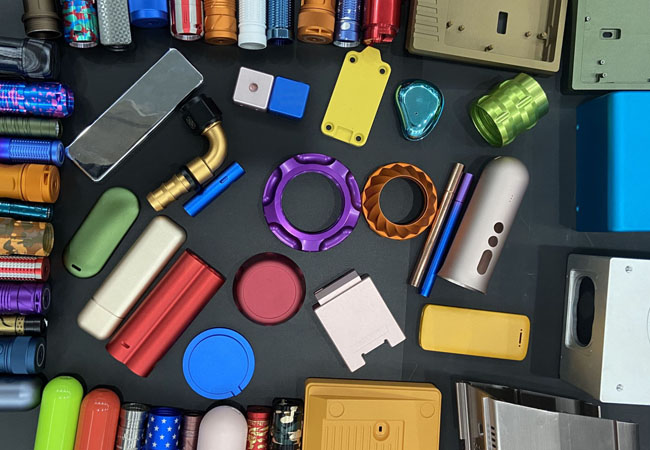
Production Volume
The number of parts needed influences the type of tooling, fixtures, and processes used. Low-volume, high-mix production favors CNC machining for its flexibility, while high-volume production often justifies the investment in dies, molds, or automated production lines.
Higher volumes may also reduce the per-unit cost due to economies of scale, making the initial investment in tooling more cost-effective over time.
Material Thickness
Material thickness affects machine selection, cutting strategy, and structural performance. Thicker materials may require more powerful machines, slower processing speeds, and different tool geometries. In contrast, thinner materials are more prone to warping or distortion during fabrication and require careful clamping and heat control.
Designers must account for these factors to avoid deformation and ensure dimensional accuracy.
Processing Speed and Feed Rate
Speed and feed rate determine how quickly and effectively material is removed during CNC machining. These parameters depend on the material, cutting tool, machine capability, and part geometry. Properly optimized speed and feed rates ensure efficient machining without tool breakage, excessive heat, or dimensional inaccuracies.
Skilled machinists and CAM software help optimize these settings for each project, balancing speed with surface quality and tool life.
Welding Techniques
Welding is often required for joining components in structural or complex assemblies. The technique used—MIG, TIG, laser, or spot welding—depends on the material, thickness, and precision required. For example:
Welding quality affects strength, durability, and appearance, and must be carefully controlled with proper training and inspection.
Meeting industry standards and client expectations requires rigorous quality control throughout the fabrication process. CNC machining factories typically follow standards like ISO 9001, AS9100, or IATF 16949, depending on the industry.
Quality checks include:
Proper documentation and inspection procedures ensure parts meet specifications and are traceable for compliance and accountability.
Custom metal fabrication involves transforming raw metal into components or finished products using a wide range of processes. Each technique serves a distinct purpose and is selected based on the part’s geometry, material, function, and production volume. For manufacturers, engineers, and product developers working with CNC machining services or a metal fabrication factory, understanding the available processes enables smarter design, better performance, and more cost-effective production. Below is a comprehensive breakdown of the most commonly used custom metal fabrication machining processes in modern manufacturing.
Casting involves pouring molten metal into a mold cavity where it solidifies into the desired shape. It's ideal for producing complex geometries and large parts with uniform wall thicknesses. Casting is often used for components in the automotive, aerospace, and heavy machinery industries. It’s best suited for high-volume production due to the cost of mold creation. Common casting methods include sand casting, die casting, and investment casting.
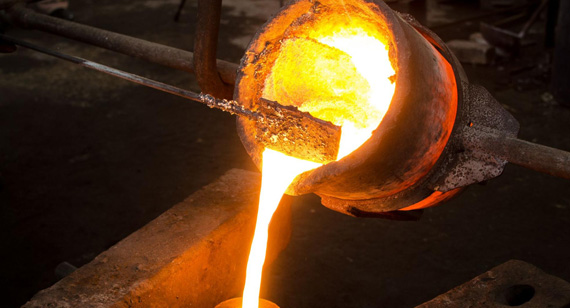
Forging shapes metal through compressive forces using hammers, dies, or presses. It produces exceptionally strong and durable parts because the internal grain structure aligns during deformation. Common forged parts include gears, axles, and crankshafts. The process can be hot or cold, with hot forging allowing greater deformation. Forging is ideal for parts that must withstand high stress and impact.
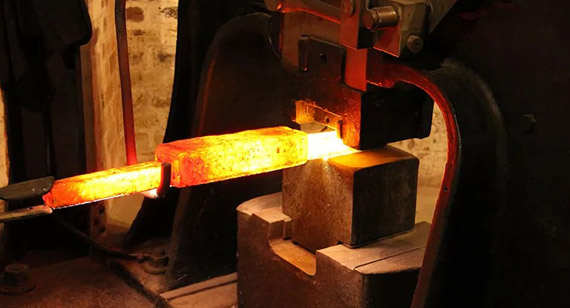
CNC Milling
Milling removes material using rotary cutters. It's widely used in CNC machining services to create flat surfaces, complex contours, pockets, and slots. CNC milling provides high accuracy and repeatability, making it ideal for components that require tight tolerances. It supports both prototype and production needs in industries like electronics, aerospace, and medical devices.
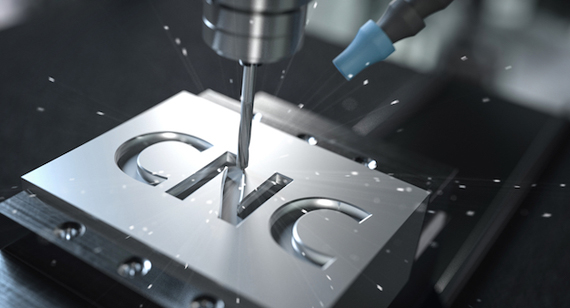
Drilling creates round holes in metal using rotating drill bits. It is one of the most basic yet essential fabrication processes, often combined with tapping or countersinking. CNC drilling ensures precise hole placement and consistent depths, crucial for assembly alignment and fastener integration in fabricated metal parts.
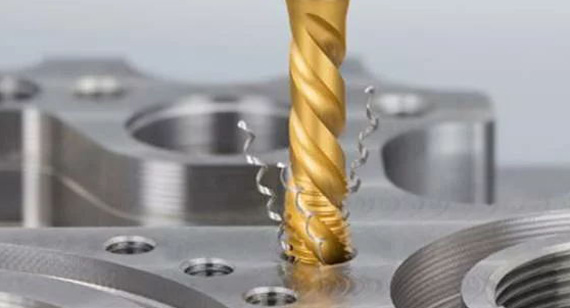
Turning involves rotating the workpiece while a stationary cutting tool removes material. This process is typically done on a lathe or CNC turning center and is ideal for producing cylindrical parts such as shafts, bushings, and threaded components. Turning is especially useful in creating symmetrical geometries and is often used for high-precision components in automotive and industrial applications.
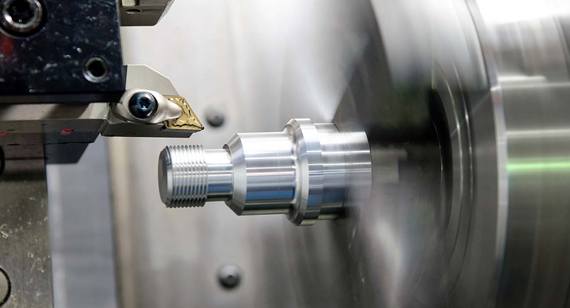
Bending changes the shape of a metal sheet or tube by applying force at specific angles. It’s commonly used in structural fabrication, enclosures, brackets, and metal furniture. CNC press brakes provide high-precision bends in complex shapes and angles. Bending requires careful consideration of material thickness, radius, and elasticity to avoid cracking or deformation.
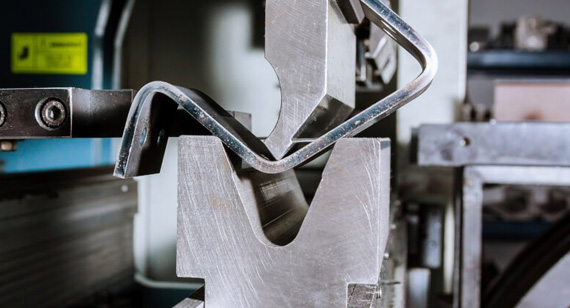
Painting
Painting serves both functional and aesthetic purposes. It adds a protective layer to prevent corrosion, improves visual appeal, and can be used for color coding. Industrial metal painting may involve spray painting, powder coating, or electrostatic coating. For many metal fabrication parts, painting is the final finishing step after machining, assembly, or welding.
Punching
Punching uses a die to shear holes or shapes in sheet metal. It's ideal for repetitive patterns like ventilation holes, fastener openings, or decorative cutouts. CNC punching machines provide speed and accuracy, making it suitable for medium to high-volume production. This process generates minimal material waste and is commonly used in enclosures and control panels.
Welding joins two or more metal parts by melting their surfaces and adding filler material. It's a critical fabrication method for creating frames, supports, and structural assemblies. Techniques include MIG, TIG, laser, and spot welding. Welding quality directly affects the strength and longevity of the fabricated structure and must comply with safety and performance standards.
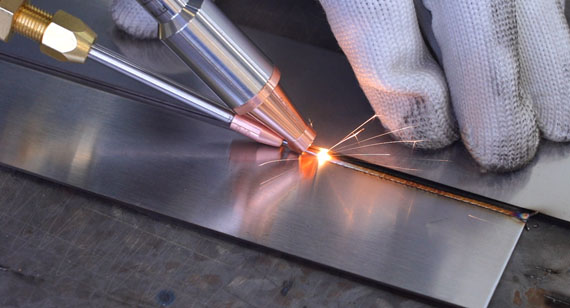
Shearing
Shearing cuts metal sheets in straight lines using blades. It is fast and efficient, ideal for trimming material to size before further processing. Shearing is most commonly used in sheet metal fabrication and ensures clean edges without the heat-affected zones caused by laser or plasma cutting.
Cutting separates metal using various technologies like sawing, plasma cutting, laser cutting, or waterjet cutting. The choice depends on material type, thickness, and precision requirements. Laser cutting offers tight tolerances and is ideal for intricate designs, while plasma and waterjet cutting are more suitable for thicker materials.
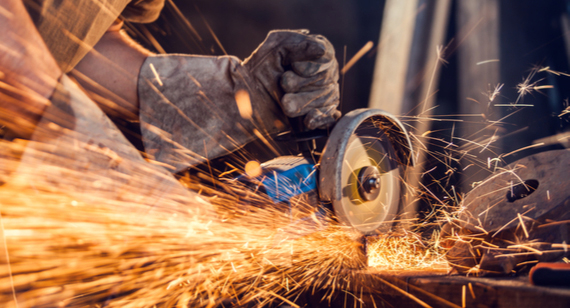
Extrusion forces metal through a die to create long, uniform cross-sectional shapes such as rods, tubes, and structural profiles. It's widely used in producing components for construction, automotive, and electronics. Aluminum is commonly extruded due to its ductility and light weight.
CNC machining encompasses a range of automated fabrication methods—milling, drilling, turning—programmed through CAD/CAM software. It allows precise, repeatable, and scalable production for complex metal parts. CNC machining factories are essential for producing everything from medical implants to aerospace brackets with high speed and tight tolerances.
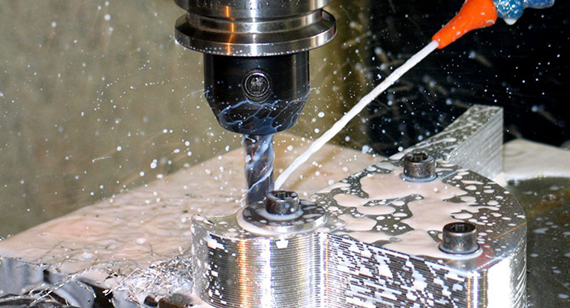
Stamping forms metal sheets using dies under high pressure. It can include bending, punching, embossing, and coining. Stamping is suitable for high-volume production of parts like automotive panels, electronic enclosures, and appliance parts. It requires upfront investment in tooling but offers low unit costs at scale.
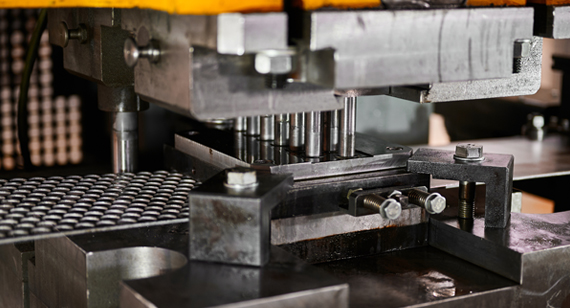
Forming
Forming reshapes metal without removing material, often through processes like rolling, spinning, or hydroforming. It’s useful for creating curved or contoured shapes and is commonly used in HVAC ductwork, containers, and aerospace skins.
Finishing
Finishing enhances the appearance and performance of metal parts. It includes polishing, anodizing, sandblasting, plating, and coating. A good finish improves corrosion resistance, wear properties, and aesthetic value. The right finishing method depends on the application, material, and environmental conditions.
These processes are frequently combined in custom metal fabrication workflows depending on part requirements and customer specifications. To see how these processes come together in real-world production, check out our section on Metal Fabrication Process: Steps or explore the different Types of Metal Fabrication next.
Here is a clear and organized table listing the common custom metal fabrication processes, including a brief description and typical applications for each:
| Process |
Description |
Typical Applications |
| Casting |
Pouring molten metal into a mold to form complex shapes. | Engine blocks, heavy equipment parts, valve bodies. |
| Forging |
Shaping metal using compressive force to increase strength. | Gears, crankshafts, axles, structural parts. |
| Milling |
Cutting away material with rotary tools; used in CNC machining. | Enclosures, heat sinks, brackets, precision components. |
| Drilling |
Creating precise round holes using rotating drill bits. | Fastener holes, housing bores, mechanical fixtures. |
| Turning |
Rotating the workpiece while a cutting tool shapes it. | Shafts, pins, bushings, threaded components. |
| Bending |
Deforming metal at angles using press brakes or rollers. | Brackets, panels, enclosures, ducts. |
| Painting |
Applying protective or decorative coatings. | Machinery, furniture, fabricated panels. |
| Punching |
Creating holes or shapes by shearing with a die. | Control panels, sheet metal cases, ventilation covers. |
| Welding |
Joining metals by melting and adding filler material. | Frames, supports, custom structures, piping. |
| Shearing |
Cutting straight lines in sheet metal. | Preparing sheets for fabrication, trimming edges. |
| Cutting |
Separating metal via laser, plasma, waterjet, or sawing. | Prototyping, structural parts, precision blanks. |
| Extruding |
Forcing metal through a die to produce long profiles. | Rails, tubing, heatsinks, structural aluminum parts. |
| CNC Machining |
Automated, computer-controlled material removal. | High-precision parts, aerospace, electronics, medical components. |
| Stamping |
Forming shapes with high-pressure dies; suitable for volume production. | Automotive parts, electronic housings, appliance panels. |
| Forming |
Reshaping metal through rolling, spinning, or hydroforming. | Pipes, ductwork, complex curves. |
| Finishing |
Enhancing surface quality and durability via polishing, anodizing, etc. | Decorative parts, corrosion-resistant surfaces, smooth finishes. |
This table helps manufacturers and designers quickly understand which metal fabrication machining processes best fit their needs.
Here is a clear and professional comparison table that outlines the differences between metal fabrication and other common manufacturing methods, tailored for your article on metal fabrication and optimized for CNC machining audiences:
Table: Metal Fabrication vs. Other Manufacturing Methods
| Criteria |
Metal Fabrication |
Casting |
Forging |
Machining |
Additive Manufacturing (3D Printing) |
| Definition |
Involves cutting, bending, welding, and assembling metal parts | Molten metal poured into a mold | Metal is shaped under pressure using dies | Material is removed from a solid block using cutting tools | Builds components layer by layer using digital models |
| Precision |
High, especially with CNC fabrication techniques | Moderate to low depending on mold quality | High, but may need post-machining | Very high—suitable for tight tolerances | Moderate—best for rapid prototyping or non-critical dimensions |
| Material Waste |
Moderate—cutting and shaping generate scrap | Minimal waste if molds are reused | Moderate—flash and trimming may be required | High—material is removed rather than formed | Low—material is added only where needed |
| Tooling Cost |
Medium—CNC tools, welding equipment, press brakes | High for molds | High for dies and presses | Medium to high depending on tools and materials | Low to medium—depending on printer and material |
| Setup Time |
Short to medium—depends on design complexity | Long—requires mold design and manufacturing | Long—die setup is time-consuming | Medium—requires CAM programming and tool setup | Short—ideal for small runs and prototypes |
| Volume Suitability |
Ideal for custom and medium-volume production | Best for high-volume production | Best for medium to high-volume production | Flexible—used in both prototyping and production | Best for low-volume or complex-shaped parts |
| Part Strength |
High—especially with processes like welding and forming | Moderate—porosity and cooling rates may affect strength | Very high—grain structure is aligned with force direction | High depending on material and technique | Moderate—limited by material options and layer bonding |
| Design Flexibility |
High—especially with custom fabrication and CNC machining | Limited by mold complexity | Limited to shapes that can be forged | Very high—complex internal features achievable | Very high—especially for organic or intricate designs |
| Common Applications |
Automotive, aerospace, construction, industrial equipment, electronics | Engine blocks, tools, machine parts | Shafts, gears, crankshafts | Precision components, surgical tools, aerospace parts | Prototypes, complex geometries, medical implants |
Metal fabrication is not a one-size-fits-all process. It spans multiple industries and functions, each requiring different tools, techniques, and outcomes. Whether it's producing high-strength components for industrial machinery or crafting custom decorative metalwork, the type of metal fabrication used depends on the purpose and complexity of the part. Below, we break down the main categories of metal fabrication and highlight the specific types of metal fabrication parts made for each. Understanding these categories helps you choose the right service—whether you're sourcing from a CNC machining factory or partnering with a full-service metal fabrication machining provider.
What Is Industrial Metal Fabrication?
Industrial metal fabrication focuses on producing robust and functional parts used in heavy-duty and high-volume industrial applications. These components must meet strict performance requirements and often require precise machining, welding, and finishing techniques to endure harsh working conditions.
Types of Metal Parts Used in Industrial Projects:
What Is Structural Metal Fabrication?
Structural metal fabrication deals with manufacturing large-scale, load-bearing components for infrastructure and architecture. These components require exceptional strength, dimensional accuracy, and compliance with engineering codes.
Types of Metal Parts Used in Structural Projects:
What Is Commercial Metal Fabrication?
Commercial metal fabrication caters to environments like offices, retail spaces, and hospitality venues, where both function and appearance matter. These projects often balance structural integrity with aesthetic finishes.
Types of Metal Parts Used in Commercial Projects:
Custom Metal Fabrication
Custom metal fabrication is ideal when off-the-shelf parts aren’t enough. This process involves tailoring components to exact specifications, often through collaborative prototyping, design refinement, and CNC machining services. It’s used across industries from aerospace to art.
Key Areas:
Decorative Metal Fabrication
Decorative metal fabrication combines function with form, often requiring precision cutting, engraving, and custom finishes. It's common in high-end architectural projects and luxury product development.
Typical Outputs:
Sheet metal fabrication involves cutting, bending, and assembling flat metal sheets into finished products. It’s widely used due to its versatility and is integral to many modern applications.
Common Applications:
Electrical Metal Fabrication
Electrical metal fabrication centers on parts used in power distribution, electronics, and smart systems. These components require high conductivity, precision tolerances, and compatibility with electrical standards.
Examples of Electrical Fabricated Parts:
By understanding these various types of metal fabrication and their use cases, you can better evaluate what your project needs—whether that’s sheet metal fabrication, custom CNC machined parts, or decorative metal components. For more detailed insights into specific fabrication techniques, explore our section on Common Custom Metal Fabrication Processes or Material Selection for Metal Fabrication.
Here is a clear and professional table summarizing the different types of metal fabrication, their descriptions, and examples of applicable parts—all optimized with your relevant keywords like metal fabrication parts, CNC machining services, and metal fabrication machining.
| Type of Metal Fabrication | Description | Example Metal Fabrication Parts |
| Industrial Metal Fabrication | Produces durable components for heavy industry and manufacturing machinery. | Gear housings, machine frames, tool holders, dies, welded steel plates. |
| Structural Metal Fabrication | Focuses on load-bearing, large-scale metal structures used in construction. | I-beams, structural columns, architectural braces, bridge trusses. |
| Commercial Metal Fabrication | Supports commercial environments with functional and aesthetic metal products. | Retail display racks, office desk frames, hotel kitchen enclosures, signage mounts. |
| Custom Metal Fabrication | Involves tailor-made parts developed through prototyping and CNC machining. | Custom jigs, aerospace brackets, artistic installations, machine-specific components. |
| Decorative Metal Fabrication | Blends aesthetics with functionality in architectural and interior design. | Railings, gates, sculptures, decorative wall panels, luxury trims. |
| Sheet Metal Fabrication | Uses thin sheets of metal for forming, bending, and cutting versatile products. | HVAC ducts, automotive enclosures, control panels, mounting brackets. |
| Electrical Metal Fabrication | Produces parts for power systems and electronic enclosures with precision. | Bus bars, terminal blocks, metal cabinets, EMI shields, battery casings. |
This table helps clarify the broad scope of metal fabrication machining across industries and illustrates how CNC machining services support everything from custom artwork to industrial tool production.
Understanding metal fabrication starts with knowing the essential terms that define the processes, tools, and techniques used daily in CNC machining factories and fabrication shops. Below is a curated glossary of common terms to help readers navigate the complexities of metal fabrication parts and machining operations.
| Term |
Definition |
| Arc Welding |
A welding process using an electric arc to melt and join metals, commonly used in structural and industrial fabrication. |
| Assembly |
The process of fitting and joining metal parts together into a final product using welding, fasteners, or adhesives. |
| Parent Metal |
The original base metal or material before any fabrication, cutting, or welding begins. |
| Bending |
A forming process where metal is deformed along a straight axis, typically performed using a press brake or CNC bending machines. |
| Blanking |
A cutting process where a punch and die are used to cut out flat shapes (blanks) from sheet metal. |
| Brinell Hardness Tester |
A device used to measure the hardness of metals by pressing a steel or tungsten carbide ball into the material's surface. |
| CNC Cutting Machine |
Computer-controlled equipment used to cut materials with high precision, commonly found in modern metal fabrication shops. |
| Cutting Torch |
A tool that uses a flame or plasma to cut through metal, typically in manual or semi-automated fabrication environments. |
| Fabrication Shop |
A dedicated facility where various metal fabrication processes such as welding, bending, and machining are carried out. |
| Hydraulic Forming |
A metal forming technique using high-pressure hydraulic fluid to shape metal sheets into complex geometries. |
| Laser Cutting |
A precise cutting process that uses a focused laser beam to melt, burn, or vaporize metal, especially effective for thin or intricate parts. |
| Metal Fabrication |
The process of creating metal structures or parts by cutting, forming, and assembling, often using CNC machining services and traditional tools. |
| Metal Stamping |
A manufacturing process that uses a stamping press and dies to form or cut metal sheets into desired shapes. |
| Milling |
A CNC machining process that removes material using rotary cutters, ideal for complex geometries and surface finishes. |
| Plasma Cutting |
A thermal cutting method that uses a jet of hot plasma to slice through electrically conductive metals. |
| Press Brake |
A machine used to bend metal sheets with precision, usually forming predefined angles or folds. |
| Robotic Welding |
Automated welding performed by industrial robots, ensuring consistency, speed, and safety in mass production. |
| Roll Forming |
A continuous bending operation where a long metal strip is passed through consecutive rollers to form a specific profile. |
| Sand Blasting |
A surface treatment process that uses high-pressure abrasive particles to clean or texture metal surfaces. |
| Weld Beads |
The visible line of metal created by the welding process that joins two pieces of metal together. |
| Yield Point |
The stress level at which a metal begins to deform plastically, an important consideration in structural design and fabrication. |
Metal fabrication has advanced from traditional manual techniques to a technology-driven industry powered by digital tools and automated systems. Today, CNC machining factories rely heavily on cutting-edge equipment and software to produce high-precision metal fabrication parts efficiently and at scale. These innovations not only improve production speed and accuracy but also allow for the manufacturing of complex components that would be nearly impossible with manual methods. Understanding the technologies involved is essential for choosing the right CNC machining services or planning a fabrication project with confidence.
Automation
Automation plays a pivotal role in modern metal fabrication machining. It involves the use of robotic arms, CNC machines, and automated feeding systems to minimize manual intervention. By integrating programmable logic controllers (PLCs), fabrication facilities can perform operations like cutting, bending, and welding with higher repeatability and reduced human error. Automation also enhances workplace safety and enables 24/7 production cycles, significantly increasing throughput and consistency across mass-produced metal fabrication parts.
CAD Software (Computer-Aided Design)
CAD software is used in the initial stages of metal fabrication to create detailed 2D or 3D digital models of parts. These designs guide the programming of CNC machines, ensuring the final product matches specifications precisely. Popular CAD platforms such as AutoCAD, SolidWorks, and Fusion 360 allow engineers to visualize, simulate, and refine designs before production begins, reducing material waste and speeding up development cycles. CAD is a foundational tool in any CNC machining factory, enabling seamless communication between design and manufacturing teams.
Laser Technology
Laser cutting is one of the most precise methods used in metal fabrication machining. It employs a concentrated beam of light to cut or engrave materials with exceptional accuracy. CNC laser machines are ideal for complex patterns and tight tolerances. They are particularly effective for working with stainless steel, aluminum, and other thin metals. Laser technology reduces the need for post-processing, ensuring cleaner edges and superior finishes, which are crucial in applications requiring both form and function.
Plasma Cutting
Plasma cutting is a high-speed, cost-effective method for slicing through electrically conductive metals. It uses a jet of ionized gas (plasma) to melt the metal and blow away the molten material, achieving fast and accurate cuts. It’s ideal for thick materials and commonly used in structural steel, shipbuilding, and heavy equipment manufacturing. When integrated into a CNC machining service, plasma cutting ensures precise repeatability and is often favored for medium- to high-volume production runs.
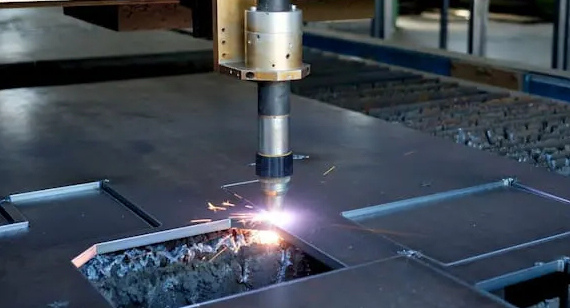
Water Jet Cutting
Water jet cutting uses high-pressure streams of water—often mixed with abrasive particles—to cut a wide range of materials, including metals, plastics, and composites. It’s a cold cutting process, meaning there’s no heat-affected zone (HAZ), which helps maintain material integrity. This makes water jet cutting especially valuable in industries where metallurgical properties must remain unchanged. Water jets are also capable of producing highly intricate shapes with tight tolerances, often required in custom metal fabrication.
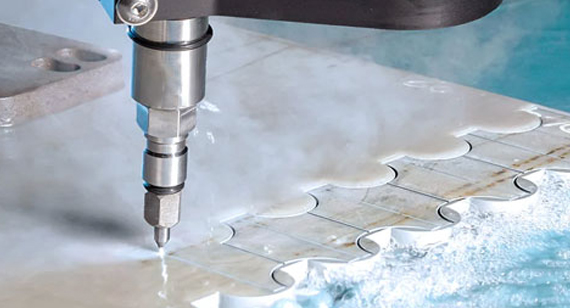
Electric Scissors (Electric Shears)
Electric scissors or shears are compact, handheld or automated tools used for cutting thin sheet metal. They are efficient for straight and curved cuts, especially in light-gauge steel or aluminum panels. In metal fabrication, electric shears are commonly used during prototyping and in fieldwork where mobility and precision are necessary. They provide a clean, burr-free cut with minimal effort and are a useful alternative to manual shears in smaller production environments.
Material selection is one of the most critical factors in metal fabrication. Choosing the right metal directly affects a part’s durability, strength, appearance, and cost-efficiency. In a CNC machining factory, different materials are selected based on mechanical properties, environmental resistance, and suitability for specific metal fabrication processes. Whether you're producing prototypes, structural components, or precision-engineered parts, understanding material options ensures better performance, lower manufacturing costs, and more reliable results. Below is a breakdown of commonly used metals in metal fabrication machining.

Carbon Steel
Carbon steel is one of the most widely used metals in metal fabrication due to its strength, affordability, and versatility. It comes in varying grades—low, medium, and high carbon—each offering different hardness and ductility levels. It's ideal for structural frameworks, heavy machinery parts, and general industrial applications. However, it’s prone to rust and often requires a protective coating or finish.
Stainless Steel
Known for its corrosion resistance and high tensile strength, stainless steel is ideal for metal fabrication parts used in harsh or hygienic environments, such as medical devices, kitchen equipment, and marine components. It contains chromium, which forms a passive layer of protection, preventing rust. CNC machining factories often prefer stainless steel for its strength and attractive surface finish, although it can be harder to machine than softer metals.
Tool Steel
Tool steel is a high-carbon alloy known for exceptional hardness, wear resistance, and heat resistance. It is used in cutting tools, dies, molds, and fixtures that must withstand repeated use and stress. While it can be more expensive and difficult to machine, its durability makes it indispensable for specialized metal fabrication machining applications requiring precision and longevity.
Aluminum is a lightweight, corrosion-resistant metal widely used in aerospace, automotive, and consumer electronics. It’s easy to machine, has a high strength-to-weight ratio, and is recyclable, making it popular for CNC machining services. Different alloys like 6061 and 7075 provide tailored mechanical properties, offering a good balance between machinability and strength.
Copper
Copper is a highly conductive metal used in electrical components, plumbing, and heat exchangers. It offers excellent thermal and electrical conductivity but is relatively soft and malleable. In metal fabrication, copper is often machined into connectors, heat sinks, and wiring terminals. Its antimicrobial properties also make it ideal for medical and food-grade equipment.
Brass Alloys
Brass, an alloy of copper and zinc, is known for its decorative appeal and corrosion resistance. It machines easily, making it perfect for fittings, valves, locks, and musical instruments. Brass is used in both commercial metal fabrication and custom metal fabrication where appearance and functionality are equally important.
Bronze
Bronze is an alloy consisting mainly of copper and tin, valued for its wear resistance, low friction, and strength. It's commonly used for bushings, bearings, and marine applications. Bronze parts produced in CNC machining factories are particularly effective in applications involving constant motion and exposure to seawater or chemicals.
Nickel
Nickel offers high corrosion resistance, especially in extreme environments involving heat or chemicals. It’s often used in aerospace, marine, and chemical processing industries. Nickel alloys, such as Inconel and Monel, are machined into components that require both strength and resistance to degradation, making them a preferred choice in high-performance metal fabrication parts.
Titanium
Titanium stands out for its exceptional strength-to-weight ratio and corrosion resistance. It's widely used in aerospace, medical implants, and high-performance automotive parts. Despite being challenging to machine, it delivers unmatched durability and biocompatibility. Titanium parts are often fabricated in specialized CNC machining services capable of handling hard-to-machine metals.
Magnesium
Magnesium is the lightest structural metal and is used where weight reduction is critical, such as in aerospace and electronics. It offers excellent machinability and shock absorption but requires careful handling due to its flammability in powdered or thin sheet forms. CNC factories producing lightweight structural components often favor magnesium alloys.
Zinc
Zinc is primarily used in galvanizing (coating other metals to prevent corrosion) and in die-casting alloys. It is easy to mold, resistant to corrosion, and cost-effective. In metal fabrication, zinc is often found in housings, hardware, and automotive components where intricate shapes and corrosion resistance are needed.
Structural Steel
Structural steel refers to steel grades specifically designed for construction and load-bearing applications. It includes beams, channels, and angle bars used in buildings, bridges, and industrial frameworks. With high strength and flexibility, structural steel is a mainstay of industrial metal fabrication, ensuring long-lasting and stable construction.
Here is a table listing the commonly used materials in metal fabrication, along with their key properties and typical applications:
| Material |
Key Properties |
Typical Applications |
| Carbon Steel |
Strong, cost-effective, easy to weld; prone to corrosion without coating | Structural frameworks, heavy machinery, automotive components |
| Stainless Steel |
Corrosion-resistant, hygienic, durable, attractive finish | Medical devices, kitchenware, marine parts, food processing equipment |
| Tool Steel |
Extremely hard, wear-resistant, high heat resistance | Cutting tools, dies, molds, and high-stress mechanical parts |
| Aluminum |
Lightweight, corrosion-resistant, high machinability | Aerospace, electronics, automotive, HVAC components |
| Copper |
Excellent electrical and thermal conductivity, antimicrobial | Electrical components, plumbing, heat exchangers, medical equipment |
| Brass Alloys |
Corrosion-resistant, decorative, easy to machine | Fittings, valves, musical instruments, architectural details |
| Bronze |
Low friction, high wear resistance, corrosion-resistant | Bearings, bushings, marine applications |
| Nickel |
High corrosion and heat resistance | Aerospace, marine, chemical processing |
| Titanium |
Lightweight, high strength, corrosion-resistant, biocompatible | Medical implants, aerospace, motorsports components |
| Magnesium |
Extremely lightweight, good machinability | Aerospace, electronics casings, automotive applications |
| Zinc |
Easy to cast, corrosion-resistant, low melting point | Die-cast housings, automotive parts, galvanized steel coatings |
| Structural Steel |
High strength, weldable, formable | Building construction, bridges, industrial structures |
This table helps compare materials at a glance, aiding decisions during metal fabrication machining and when choosing metal fabrication parts in CNC machining projects.
When it comes to metal fabrication, choosing the right steel type is essential to ensure structural integrity, performance, and cost-efficiency. Not all steels are created equal—each type comes with its unique set of properties, making it more or less suitable for specific fabrication needs. Whether you are working with CNC machining services, welding, cutting, or forming, understanding the differences between steel types can save time, money, and frustration. This section explores the three most commonly used steels in metal fabrication machining: carbon steel, stainless steel, and tool steel.
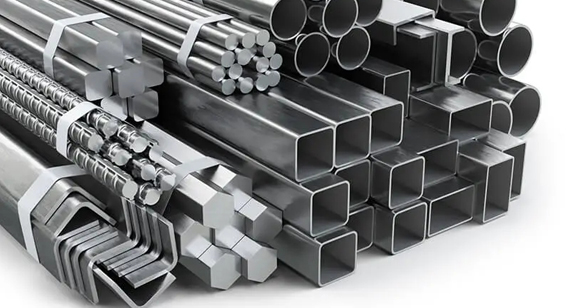
Carbon Steel
Carbon steel is the most widely used steel in metal fabrication parts due to its affordability, strength, and ease of processing. It contains a higher carbon content compared to other steels, which gives it increased hardness and strength—but at the cost of reduced ductility and corrosion resistance. Carbon steel is categorized into three grades: low, medium, and high carbon.
Due to its versatility and ease of machining, carbon steel remains a go-to material in CNC machining factories across industries including construction, automotive, and heavy equipment manufacturing.
Stainless Steel
Stainless steel is prized for its corrosion resistance, strength, and clean aesthetic, making it a staple in industries that demand hygiene and durability, such as medical, food processing, and marine applications. The material's resistance to oxidation is due to its high chromium content (typically above 10.5%).
Although stainless steel can be more challenging and costly to machine, advances in CNC machining services have made it more accessible. It’s an excellent choice when long-term durability and appearance are top priorities.
Tool Steel
Tool steel is specifically designed for high durability, wear resistance, and the ability to hold a cutting edge, making it ideal for the production of tools, dies, and molds. These steels are alloyed with elements like tungsten, molybdenum, and vanadium to enhance their hardness and thermal stability.
While tool steel can be difficult to machine due to its hardness, it is indispensable in high-performance applications within metal fabrication machining environments. For parts that require prolonged use under extreme conditions, this material is unmatched.
Even with the right tools, materials, and technologies in place, successful metal fabrication requires careful consideration of several additional factors that directly influence the efficiency, cost, and quality of the final product. While most attention is often placed on processes and machines, ignoring these critical variables can result in higher production costs, delays, or substandard metal fabrication parts. In this section, we’ll explore essential yet often overlooked elements in metal fabrication machining, including material types, surface finishing, design complexity, and the overall manufacturability of parts.
Material Types
Material selection plays a decisive role in determining product performance, fabrication technique, and long-term cost-effectiveness. Each material—whether it’s carbon steel, aluminum, stainless steel, or brass alloys—comes with its own mechanical and chemical properties that affect its behavior during CNC machining services, welding, bending, or forming. Choosing incompatible materials can lead to problems like thermal distortion, premature wear, or poor structural integrity.
A well-informed selection of material not only improves product durability but also optimizes cost and manufacturing speed.
Surface finishing isn’t just about aesthetics—it’s a crucial factor in corrosion resistance, wear resistance, and even mechanical performance. Depending on the part’s function and environment, you might choose from a variety of finishing processes, such as powder coating, anodizing, galvanizing, polishing, or painting.
Finishing techniques must be selected early in the design process, as they may require additional allowances in part dimensions or specialized handling during assembly.
Design
Effective metal fabrication design balances functionality, manufacturability, and cost-efficiency. Overly complex designs can lead to excessive tooling changes, long cycle times, or infeasibility with standard machines. That’s why DFM (Design for Manufacturability) principles are critical in creating models that are both innovative and practical to produce.
Collaborating early with a CNC machining factory can help identify and resolve potential design bottlenecks before production begins.
Manufacturing
Manufacturing considerations encompass the full scope of operational planning, including machinery capabilities, lead times, workforce availability, and quality control protocols. An effective fabrication strategy aligns your design and materials with the shop’s available technologies such as laser cutting, CNC turning, or robotic welding.
Understanding the full manufacturing lifecycle allows for smoother operations, reduced costs, and quicker time-to-market—crucial in today’s competitive environment.
When it comes to creating reliable, high-performance components, metal fabrication stands out as one of the most powerful manufacturing solutions available. Whether you're working in aerospace, automotive, medical, or consumer electronics, the benefits of metal fabrication machining are hard to overlook. However, like any manufacturing process, it comes with both strengths and limitations. Understanding these advantages and disadvantages allows engineers, procurement teams, and manufacturers to make informed decisions based on project requirements, material constraints, and end-use conditions.
In the following sections, we’ll outline the specific advantages that make metal fabrication parts so desirable, followed by a realistic look at some of the common drawbacks and challenges encountered in this field.

Advantages of Metal Fabrication
The advantages of metal fabrication are rooted in its adaptability, material properties, and ability to produce durable and complex components with precision. With the rise of CNC machining services and advanced fabrication tools, businesses now have more control than ever over part design, tolerances, and scalability. Below, we explore the most impactful benefits of metal fabrication in detail.
Versatility
Metal fabrication is applicable across a wide variety of industries, materials, and design requirements. From custom sheet metal enclosures to heavy structural beams, the versatility of this process allows engineers to tailor products to meet unique specifications. Materials like stainless steel, aluminum, copper, and titanium are all suitable for metal fabrication machining, providing broad options for strength, weight, conductivity, and corrosion resistance.
Durability
Metal parts are known for their toughness and longevity. Compared to plastic or composite alternatives, fabricated metal components can withstand higher temperatures, mechanical stresses, and environmental exposure. This durability reduces maintenance and replacement costs over the product’s lifecycle—making it a preferred choice for mission-critical components in aerospace, medical devices, and construction.
Customization
Using modern CAD/CAM software and CNC equipment, metal fabrication can achieve near-unlimited customization. Whether it’s creating one-off prototypes or adjusting tolerances to exact client requirements, manufacturers can easily modify geometry, features, and surface finishes. Custom metal fabrication parts are especially useful in sectors that demand unique solutions, such as automotive R&D and industrial automation.
Efficiency
Advances in CNC machining factories, robotics, and automation have streamlined metal fabrication workflows. With optimized nesting software, multi-axis machining, and laser cutting technologies, parts can be produced faster and more accurately than ever. Reduced cycle times translate to shorter lead times and increased throughput—crucial in high-demand industries.
Economical
Although the initial investment in metal fabrication may seem high, the long-term cost-effectiveness is significant. Durable materials, reduced maintenance, reusability, and minimal waste (thanks to precise cutting and forming) all contribute to lowering total production costs. Batch production further amplifies cost benefits by reducing per-unit expenses.
Strength-to-Weight Ratio
Certain metals, such as aluminum and titanium, offer high strength-to-weight ratios. This characteristic is crucial in fields like aerospace and automotive, where reducing weight without compromising strength can improve fuel efficiency and performance. Metal fabrication allows manufacturers to design components that meet stringent weight and strength criteria simultaneously.
Aesthetics
A well-fabricated metal part not only performs well but also looks professional and polished. Processes such as powder coating, anodizing, and polishing enhance visual appeal while improving surface durability. High-end consumer products, architectural structures, and medical devices often rely on the clean, precise appearance of fabricated metal components.
Recyclability
Most metals used in fabrication—such as steel, aluminum, and copper—are highly recyclable. Scrap material can be repurposed with minimal degradation in quality, supporting environmental sustainability and reducing raw material costs. This makes metal fabrication an eco-friendly choice for businesses focused on green manufacturing practices.
Innovation
As CNC machining services and software continue to evolve, metal fabrication has become a hotbed for innovation. Rapid prototyping, additive manufacturing integrations, and smart factory technologies are opening new doors in design and production flexibility. This fosters faster product development cycles and introduces new possibilities in customized manufacturing.
Safety
Fabricated metal parts offer excellent fire resistance, structural integrity, and hygiene—especially when finished properly. These qualities are vital in industries where safety standards are non-negotiable, such as healthcare, food processing, and public infrastructure. Stainless steel, for example, is both durable and easy to sanitize, making it ideal for sterile environments.
Competitively Priced
With the scalability of modern fabrication techniques, metal fabrication machining is cost-competitive—even against alternative materials like plastics and composites. Mass production, standardized tooling, and reduced labor inputs through automation all contribute to competitive pricing models that benefit both small businesses and large-scale manufacturers.
Easy to Maintain
Metal parts are inherently easier to maintain than many other materials. Their resistance to corrosion, wear, and impact—especially when properly coated—means less frequent repairs and replacements. This reliability makes them suitable for long-term use in industrial, commercial, and public-facing applications.
Certainly! Here's a table listing the advantages of metal fabrication clearly and professionally, suitable for SEO and user readability:
Table: Advantages of Metal Fabrication
| Advantage |
Description |
| Versatility |
Applicable to a wide range of industries and compatible with various metals like steel, aluminum, copper, and titanium. |
| Durability |
Metal parts offer long-term performance, high strength, and resistance to temperature, corrosion, and wear. |
| Customization |
Allows precise adjustments to design, geometry, and tolerances through CAD/CAM and CNC machining. |
| Efficiency |
Automated processes like laser cutting and CNC reduce cycle times and increase production speed. |
| Economical |
Though initial costs can be high, the long-term savings from durability, low maintenance, and minimal waste make it cost-effective. |
| Strength-to-Weight |
Metals like aluminum and titanium offer high strength while remaining lightweight—ideal for aerospace and automotive. |
| Aesthetics |
Enhanced visual appeal through finishing methods such as anodizing, powder coating, and polishing. |
| Recyclability |
Metals are reusable with minimal quality loss, supporting sustainable and eco-friendly manufacturing. |
| Innovation |
Supports rapid prototyping and smart manufacturing through integration with advanced technologies and CNC machining services. |
| Safety |
Offers high fire resistance, hygiene, and structural stability—critical for industries like medical, food, and public infrastructure. |
| Competitively Priced |
Mass production, automated fabrication, and material reusability make it cost-effective even compared to plastic or composite alternatives. |
| Easy to Maintain |
Metal components require less frequent maintenance due to their inherent resistance to environmental and mechanical stress. |
Certainly! Here's a professional, clear, and easy-to-read table listing the disadvantages of metal fabrication, aligned with your article framework:
Table: Disadvantages of Metal Fabrication
|
Disadvantage |
Description |
| Initial Cost Can Be Higher |
Equipment investment, setup, and tooling for CNC machining, laser cutting, and welding can be expensive, especially for small-batch or prototype runs. |
| Longer Time |
Complex parts often require multiple steps, including design, prototyping, and post-processing, which can extend production timelines. |
| More Finishing Operations |
Additional processes like deburring, coating, or polishing are often necessary to achieve desired surface finish and corrosion resistance. |
| Design Constraints |
Despite CNC capabilities, intricate geometries may still be limited by machine tool access, material form, or cost-effective manufacturability. |
Metal fabrication plays a crucial role across nearly every major industry by enabling the transformation of raw metal materials into high-precision, functional parts. Whether it's shaping a custom aerospace bracket or constructing a large steel frame for a skyscraper, metal fabrication processes such as cutting, bending, and welding are essential for producing reliable, durable, and complex components. The versatility of metal fabrication machining allows manufacturers to tailor designs to exact specifications, making it an ideal solution for sectors that demand strength, precision, and customization.
Below are the primary industries where metal fabrication is widely applied, along with examples of typical metal fabrication parts used in each field:
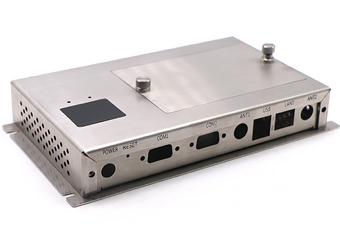
Architecture
Metal fabrication is a foundational process in architecture, where it supports both structural integrity and aesthetic appeal.
Aerospace
The aerospace industry demands lightweight yet extremely durable parts that can withstand high stress and temperature.
Energy
Metal fabrication supports traditional and renewable energy infrastructure by providing durable parts for operation in harsh environments.
Mining
Mining operations require rugged equipment capable of enduring heavy loads, abrasion, and extreme terrain.
Shipbuilding
The shipbuilding industry relies heavily on structural and safety-critical components made through metal fabrication.
Military and Defense
Precision, durability, and rapid production make metal fabrication a key process for defense manufacturing.
Compactness and conductivity are key in electrical systems, and metal fabrication allows for detailed customization of enclosures and components.
Industrial Machinery and Equipment
Custom fabrication meets the unique specifications of various industrial machines and mechanical systems.
From the chassis to intricate engine parts, metal fabrication is central to automotive innovation and performance.
Precision and cleanliness are paramount in the medical field, where metal fabrication produces reliable and sterilizable equipment.
Transportation Infrastructure
Bridges, rail systems, and tunnels require structurally sound and long-lasting metal components.
Art and Sculpture
Metal fabrication allows artists to bring complex and large-scale concepts to life with modern tools and technologies.
Telecommunications
With the rise of digital infrastructure, fabricated metal parts support everything from server racks to communication towers.
Here is a clear, organized table listing the Applications of Metal Fabrication by industry, including typical parts and key benefits:
| Industry |
Typical Metal Fabrication Parts |
Key Benefits |
| Architecture |
Building frames, support columns, staircases, decorative panels | Custom design, structural strength, corrosion resistance |
| Aerospace |
Engine components, airframes, turbine housings, landing gear assemblies | Lightweight materials, precision, performance under extreme conditions |
| Energy |
Wind turbine components, solar panel frames, pipeline systems, power plant structures | Durability, corrosion resistance, custom configurations |
| Mining |
Mining carts, crusher housings, conveyor structures, chassis frames | Heavy-duty strength, wear resistance, rugged design |
| Shipbuilding |
Hull plates, engine parts, decks, railings, structural frames | Marine-grade corrosion resistance, structural reliability |
| Military and Defense |
Vehicle armor, missile casings, UAV frames, weapons components | High durability, precise manufacturing, compliance with defense standards |
| Electronic & Electrical |
Control panels, heat sinks, enclosures, brackets | Compact design, EMI shielding, thermal conductivity |
| Industrial Machinery |
Machine housings, gears, frames, guards, tooling components | High precision, load resistance, seamless integration |
| Automotive |
Exhaust systems, engine brackets, chassis frames, roll cages | Lightweight, safety-enhancing, scalable production |
| Medical Devices |
Surgical tools, equipment frames, hospital bed components | Biocompatibility, sterilization-ready, high precision |
| Transportation Infrastructure |
Bridge supports, guardrails, tunnel linings, railway parts | Structural strength, weatherproofing, long-term performance |
| Art and Sculpture |
Sculptures, decorative installations, custom metal artwork | Aesthetic flexibility, structural integrity, durability |
| Telecommunications |
Antenna mounts, satellite enclosures, telecom tower components | Environmental protection, stability, secure housing |
In today’s advanced manufacturing environment, metal fabrication relies heavily on a suite of specialized software tools to ensure precision, efficiency, and quality. From the initial design phase to final inspection, software systems play a crucial role in automating workflows, minimizing errors, reducing material waste, and ensuring repeatability. These tools not only enhance the output of a CNC machining factory, but also support complex decision-making for the production of metal fabrication parts. Let’s explore the most commonly used software categories in metal fabrication and how they serve different stages of the process.
CAD (Computer-Aided Design) Software
CAD software is the foundation of modern metal fabrication machining, enabling engineers and designers to create detailed 2D drawings and 3D models of parts before they are manufactured.
Features:
Examples:
Purpose:
CAD tools allow designers to conceptualize and iterate parts, reducing the risk of design flaws. They support compatibility with downstream systems such as CAM and ERP for integrated workflows.
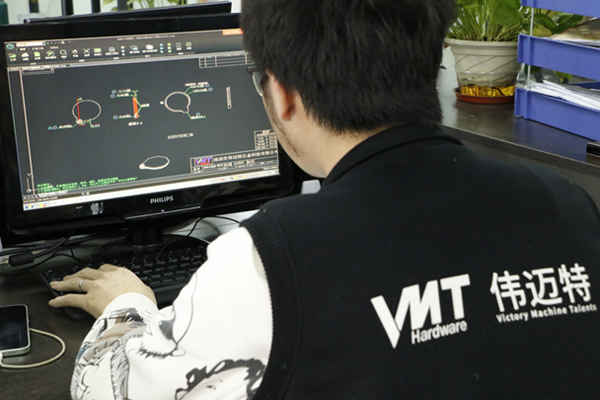
CAM (Computer-Aided Manufacturing) Software
CAM software converts CAD designs into machine instructions (G-code), helping bridge the gap between design and manufacturing.
Features:
Examples:
Purpose:
CAM software ensures that CNC machining services execute designs precisely, improving accuracy, cycle time, and tool efficiency.
CAE (Computer-Aided Engineering) Software
CAE tools are used to simulate and analyze product performance under different physical conditions like stress, temperature, or vibration.
Features:
Examples:
Purpose:
CAE software validates and optimizes designs before production, preventing costly failures and ensuring the durability of metal fabrication parts.
ERP (Enterprise Resource Planning) Software
ERP systems manage business processes across departments—integrating operations like inventory, procurement, HR, and production planning.
Functions:
Examples:
Purpose:
ERP software ensures efficiency and traceability in the production lifecycle, particularly for high-volume or custom CNC machining factory environments.
Nesting Software
Nesting software optimizes material usage by automatically arranging parts on metal sheets to minimize waste.
Features:
Examples:
Purpose:
Especially useful in sheet metal fabrication, nesting software reduces material costs and speeds up laser, plasma, or water jet cutting processes.
PLC (Programmable Logic Controller) Software
PLC software programs and monitors automation systems used in the fabrication process, ensuring accurate and safe operation of equipment.
Features:
Examples:
Purpose:
PLCs are critical in automating repetitive tasks, synchronizing machinery, and ensuring consistent quality in metal fabrication machining workflows.
Quality Management Software
This software ensures that manufactured parts meet regulatory and customer quality standards throughout the production lifecycle.
Features:
Examples:
Purpose:
These tools help CNC machining services and fabrication shops maintain compliance, reduce defects, and streamline audits and reporting.
Here is a comprehensive table summarizing the key software used in metal fabrication, including their features, examples, and purposes:
| Software Type |
Features |
Examples |
Purpose |
| CAD (Computer-Aided Design) |
- 2D/3D modeling - Parametric design - Assembly modeling - Drafting tools |
AutoCAD, SolidWorks, Fusion 360, CATIA |
To design accurate models and drawings of metal parts and assemblies for manufacturing. |
| CAM (Computer-Aided Manufacturing) |
- Toolpath generation - G-code creation - Machine simulation - CNC integration |
Mastercam, HSMWorks, Fusion 360 CAM |
To convert CAD models into precise machining instructions for CNC machines. |
| CAE (Computer-Aided Engineering) |
- Structural simulation - Thermal/stress analysis - Finite Element Analysis (FEA) |
ANSYS, Abaqus, COMSOL |
To test and validate the performance, strength, and durability of parts before production. |
| ERP (Enterprise Resource Planning) |
- Inventory control - Production planning - Order tracking - Cost estimation |
SAP, Oracle NetSuite, Epicor, JobBOSS |
To manage business operations, from resource planning to manufacturing, ensuring efficient workflow and cost control. |
| Nesting Software |
- Part arrangement optimization - Material waste reduction - Batch nesting |
SigmaNEST, ProNest, NestFab |
To efficiently layout parts on sheet metal to minimize scrap and reduce cutting time. |
| PLC (Programmable Logic Controller) |
- Real-time machine control - Logic programming - Automation integration |
Siemens TIA Portal, Studio 5000 |
To control, monitor, and automate machinery in the fabrication process for consistency and safety. |
| Quality Management Software |
- Inspection tracking - CAPA management - Statistical Process Control (SPC) |
IQMS, MasterControl, UniPoint |
To ensure product quality, compliance, and traceability through structured inspections and reporting. |
This table is designed to help readers and manufacturers understand the digital backbone behind modern metal fabrication machining and CNC machining services.
Problem: Manufacturers and engineers often hesitate to proceed with custom metal fabrication projects due to cost concerns. Whether you're developing new machinery, building architectural structures, or designing consumer products, price uncertainty can delay important decisions.
Agitation: Misjudging the true cost of metal fabrication can lead to budget overruns, production delays, or quality compromises. Costs vary depending on numerous factors—from the materials used to the complexity of the design and the production method.
Solution: Understanding the cost components of metal fabrication can help you make smarter, more informed decisions and plan accurately. This section breaks down the key cost-driving elements to give you clarity before your next CNC machining or metal fabrication project.
Excerpt (Featured Snippet-Optimized)
Metal fabrication costs depend on multiple variables, including material choice, design complexity, manufacturing methods, labor, and volume. Careful planning and supplier selection can help reduce expenses while maintaining high quality.
Transition Paragraph
Now that we’ve addressed the general concern about cost, let’s take a closer look at each factor that contributes to the overall expense of metal fabrication. This breakdown will help you identify areas where cost-efficiency can be achieved without sacrificing performance or precision.
Key Cost Factors in Metal Fabrication
Material Cost
Material selection is one of the biggest cost drivers. Metals like stainless steel, aluminum, and titanium offer specific performance benefits, but they vary greatly in price. For example, carbon steel is cost-effective for many industrial applications, while aerospace projects may require lightweight and corrosion-resistant alloys like titanium, which are significantly more expensive. Material thickness, grade, and market volatility also affect pricing.
Design Complexity
The more complex a part's geometry, the more time and resources are needed to manufacture it. Intricate designs may require additional CNC programming, multi-axis machining, or even custom tooling, which increases both labor and machine time. Simpler, modular designs typically reduce costs and streamline the fabrication process.
Manufacturing Technology
The type of manufacturing process selected—whether laser cutting, CNC machining, metal stamping, or welding—impacts cost. Advanced processes like 5-axis CNC machining or waterjet cutting offer precision but can be more expensive than basic cutting or drilling operations. Automation and equipment availability also play a role.
Labor Cost
Skilled labor is essential for high-quality metal fabrication. Labor rates vary by region and project complexity. Tasks like welding, polishing, inspection, and assembly add to labor hours. Using a CNC machining factory with automation can reduce the labor portion of your cost by increasing consistency and throughput.
Quantity
Higher production volumes usually benefit from economies of scale. While prototyping or low-volume runs may incur higher per-unit costs due to setup and programming time, large batches spread these costs out. CNC machining services often offer volume discounts for bulk orders.
Finishing Process
Secondary processes such as anodizing, powder coating, painting, or polishing also add to the final cost. These are essential for parts requiring corrosion resistance, aesthetic appeal, or functional surface finishes. The number and type of finishes will influence the total price significantly.
Quality and Compliance Requirements
If your product must meet strict industry certifications (e.g., ISO, ASTM, RoHS, or medical-grade compliance), the inspection, documentation, and testing requirements will increase fabrication costs. Quality assurance processes like CMM inspection or non-destructive testing require specialized equipment and expertise.
Delivery Time and Deadline
Rush orders and tight deadlines often require overtime labor, prioritized machine use, or expedited shipping, all of which raise project costs. Planning lead times in advance and working with an experienced CNC machining factory can help mitigate these costs.
Problem: Metal fabrication projects often encounter technical and operational hurdles, from material deformation to precision errors. These issues can delay production, increase costs, or compromise part quality.
Agitation: Without anticipating and addressing these challenges early, manufacturers risk costly rework, tool damage, and structural failures—especially in critical applications like aerospace, automotive, or medical devices.
Solution: By understanding the common challenges in metal fabrication and implementing proven solutions, you can ensure smoother workflows, higher-quality parts, and improved profitability.
Common challenges in metal fabrication include warping, corrosion, material fatigue, and dimensional inaccuracies. These can be mitigated with proper material selection, precision equipment, skilled labor, and strict quality control measures.
Let’s break down the major issues that occur during metal fabrication and explore practical solutions that fabricators and CNC machining factories implement to overcome them. Whether you’re prototyping or scaling to full production, awareness of these challenges is key to maintaining high standards and avoiding setbacks.
Challenges and Solutions in Metal Fabrication
| Challenge |
Description |
Solutions |
| Warping |
Occurs due to uneven heating or cooling during welding or cutting. | Use controlled cooling techniques, clamp workpieces, and select low-distortion welding methods. |
| Corrosion |
Exposure to moisture or chemicals leads to metal degradation. | Use corrosion-resistant materials like stainless steel or apply protective coatings (e.g., powder coat). |
| Material Fatigue |
Repeated stress causes microcracks and eventual part failure. | Design with stress distribution in mind and use fatigue-resistant materials. |
| Precision Errors |
Misalignments or tolerancing issues affect part fit and function. | Use high-precision CNC machining services and implement strict inspection protocols. |
| Welding Defects |
Includes porosity, undercutting, or incomplete fusion. | Use skilled welders, proper filler material, and maintain clean surfaces before welding. |
| Dimensional Inaccuracies |
Parts deviate from design specifications. | Utilize advanced CNC programming, CMM inspection, and temperature-controlled environments. |
| Tool Wear |
Repeated use of cutting tools leads to dull edges and poor finishes. | Implement tool life monitoring systems and schedule routine replacements. |
| Surface Defects |
Imperfections like scratches, burrs, or roughness impact functionality or aesthetics. | Perform deburring, polishing, and use appropriate feeds and speeds during machining. |
| Assembly Challenges |
Poor fit between parts delays or complicates final product assembly. | Design for manufacturability (DFM) and perform pre-assembly quality checks. |
Problem: Choosing the wrong metal fabrication factory can result in poor quality, missed deadlines, and unexpected costs. For critical parts, especially in industries like aerospace, automotive, or medical, there’s no room for error.
Agitation: Many buyers are overwhelmed by options—some facilities promise fast turnaround, others low costs, but few truly deliver consistent results. Without a clear selection strategy, you risk compromising your entire supply chain.
Solution: By understanding the key factors that define a reliable metal fabrication partner—from technical capabilities to quality assurance—you can confidently select a CNC machining factory that delivers both precision and value.
To choose the right metal fabrication factory, evaluate its technical capabilities, quality certifications, material expertise, equipment, past projects, lead times, and customer service. A strong CNC machining services provider will offer transparency, scalability, and precision.
Finding the right fabrication partner is not just about price—it's about long-term reliability, consistent output, and engineering expertise. Let’s explore the most critical factors that define a top-tier metal fabrication machining factory and how they align with your project goals.
Key Factors to Consider When Choosing a Metal Fabrication Factory
1. Technical Capabilities
A qualified factory should offer a wide range of services, including cutting, bending, welding, and CNC machining. Ensure they handle complex geometries, tight tolerances, and offer full-service solutions from prototyping to production. If your project involves custom metal fabrication parts, ask about their design-to-delivery workflow and software platforms (e.g., CAD/CAM).
2. Industry Experience
Check the factory’s experience in your industry—whether it’s aerospace, medical, automotive, or energy. Experienced providers will better understand your compliance needs and application standards. Look for a portfolio of past projects or case studies that reflect their domain expertise.
3. Certifications and Quality Control
Certifications like ISO 9001, AS9100, or IATF 16949 indicate strong quality management systems. Ask about inspection procedures, dimensional accuracy verification, and whether they perform in-house testing. High-quality CNC machining services always include tight quality assurance protocols.
4. Material Expertise
A competent CNC machining factory should work with a variety of materials such as carbon steel, stainless steel, aluminum, and titanium. Material compatibility directly impacts part strength, corrosion resistance, and surface finish. Ensure they stock or source verified-grade metals for fabrication.
5. Production Capacity and Equipment
Assess whether the facility is equipped to handle your project volume—small-batch or mass production. Modern equipment like 5-axis CNC machines, laser cutters, and robotic welders indicate strong capacity. Facilities that continually invest in advanced machinery are more likely to deliver reliable results.
6. Lead Time and Turnaround
Timely delivery is non-negotiable. Ask about standard lead times, order processing efficiency, and their flexibility in meeting urgent deadlines. A well-organized CNC machining services provider will offer realistic schedules and maintain consistent communication.
7. Customer Support and Transparency
From quoting to post-delivery support, excellent communication matters. A good metal fabrication factory will offer detailed proposals, proactive updates, and quick resolution of issues. Clear documentation, project tracking, and dedicated account management are all signs of a reliable partner.
When it comes to precision, speed, and reliability in metal fabrication, VMT stands as a trusted leader in the industry. With years of experience and a strong track record of serving global clients across aerospace, automotive, medical, and electronics sectors, we offer comprehensive CNC machining services tailored to meet demanding requirements. From concept to completion, our team of skilled engineers and machinists is committed to delivering excellence in every part we produce.
At VMT, we understand that every customer and project is unique. That’s why we provide full-service solutions—starting from material selection and CAD modeling, all the way to precision cutting, bending, welding, and finishing. Whether you need metal fabrication parts for high-performance vehicles or custom enclosures for industrial systems, we have the technology and expertise to exceed expectations. Our CNC machining factory is equipped with advanced 3-, 4-, and 5-axis machines, laser cutters, robotic welders, and automated inspection systems to ensure unparalleled quality and efficiency.
Our team works with a broad range of metals including aluminum, stainless steel, carbon steel, titanium, and copper alloys. We also support custom fabrication for prototyping and production runs, providing tight tolerances and outstanding surface finishes. In addition to machining, we offer secondary operations like heat treatment, anodizing, powder coating, and full assembly services.
As a customer-centric company, VMT is driven by precision engineering, lean manufacturing, and consistent communication. From initial RFQ to final delivery, we guarantee transparency, fast lead times, and scalable solutions.
If you're looking for a reliable partner for metal fabrication machining, VMT is ready to help you bring your ideas to life with unmatched accuracy and efficiency. Contact us today to discuss your next project.
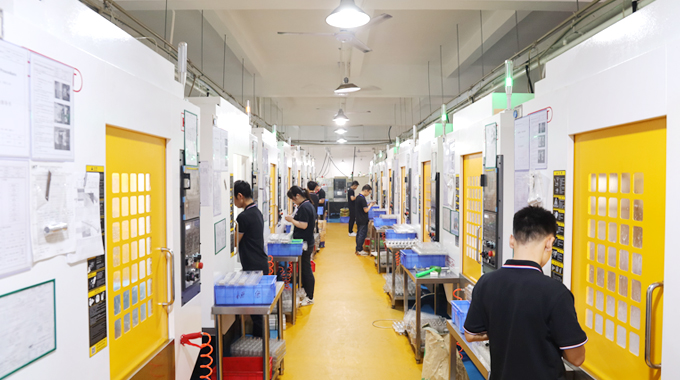
Metal fabrication is far more than just bending and cutting metal—it's a multifaceted process that integrates advanced technologies, precise engineering, and skilled craftsmanship to transform raw materials into high-performance components across countless industries. From industrial machinery and aerospace parts to custom architectural elements and consumer electronics, fabricated metal parts form the backbone of modern innovation and infrastructure.
Throughout this article, we’ve explored what metal fabrication is, how it has evolved through history, and what core steps define the process—from material selection and prototyping to finishing and assembly. We’ve examined key parameters like design complexity, surface finishing, and production volume, and outlined common processes such as welding, milling, drilling, and CNC machining. You’ve also learned how various industries—from automotive to telecommunications—rely heavily on tailored metal fabrication services to meet their specific functional and aesthetic needs.
Whether you’re navigating material costs, choosing between carbon steel and aluminum, or determining which metal fabrication factory is right for your project, the insights in this guide equip you with the knowledge needed to make informed, confident decisions. As metal fabrication continues to evolve with automation, software integration, and higher precision demands, staying informed is the key to staying competitive.
For manufacturers, designers, and engineers seeking a dependable partner, VMT’s CNC machining services offer end-to-end support—from rapid prototyping to full-scale production. With our industry-leading facilities and expert team, we deliver consistent quality, speed, and innovation in every metal part we produce.
Explore more about CNC machining, metal fabrication parts, and our custom solutions by browsing our service pages—or reach out to VMT directly to bring your next idea to life with precision you can trust.
Is Metal Fabrication Difficult?
Metal fabrication can be complex due to the need for precision, material knowledge, and the integration of multiple processes such as cutting, welding, and finishing. However, with the right equipment and expertise, it becomes a streamlined and highly efficient manufacturing method.
What is the Difference Between Steel Fabrication and Metal Fabrication?
Steel fabrication is a subset of metal fabrication focused exclusively on steel materials. Metal fabrication, on the other hand, encompasses a wider range of metals including aluminum, copper, brass, and titanium.
What is the Difference Between Metal Fabrication and Manufacturing?
Metal fabrication involves creating metal parts through processes like cutting, bending, and assembling. Manufacturing is a broader term that includes fabrication but also covers non-metal materials and product assembly at scale.
What is the Principle of Fabrication?
The principle of fabrication lies in transforming raw metal materials into functional parts through a series of controlled mechanical and chemical processes, such as machining, welding, and forming.
What Are the Tools Used During Metal Fabrication?
Common tools include laser cutters, plasma cutters, welding machines, press brakes, grinders, lathes, CNC mills, shears, and drills.
Does Fabrication Also Mean Welding?
Not exactly. Welding is a process within metal fabrication. Fabrication includes cutting, forming, and finishing as well—welding is just one step in the overall process.
How Do You Remove Metal During Metal Cutting?
Metal is removed using various techniques like sawing, shearing, laser cutting, water jet cutting, or plasma cutting, depending on the material and required precision.
What Differentiates Metal Fabrication from Steel Fabrication?
Metal fabrication includes all types of metals, while steel fabrication focuses specifically on carbon, stainless, or alloy steels.
What Are the Three Types of Metal Fabrication?
What Are the Six Types of Tools Used in Metal Fabrication?
What Are the Basics of Metal Fabrication?
The basics include selecting the right material, designing the part, cutting and forming, joining parts (e.g., welding), surface finishing, and assembling the final product.
Is Metal Fabrication the Same as Welding?
No. Welding is a joining method within the broader scope of metal fabrication, which includes many other processes.
What Are the Four Common Materials Used in Metal Fabrication?
What Are the Three Main Fabrication Techniques?
What Techniques Are Used in Metal Fabrication?
Techniques include cutting, bending, stamping, drilling, welding, turning, milling, and finishing. Advanced fabrication may also involve CNC machining and 3D printing.
What Are the Two Most Common Types of Fabrication?
What Is Metal Fabrication PDF?
It refers to a downloadable document (PDF) that outlines metal fabrication processes, standards, and design guidelines for educational or reference purposes.
Why Is Metal Fabrication Important?
Metal fabrication is essential for building parts and structures used in transportation, construction, energy, medical devices, and countless everyday products.
What Are the Types of Metal Fabrication?
Types include industrial, structural, commercial, decorative, custom, sheet metal, and electrical fabrication, each serving different sectors and functions.
What Is the Difference Between Metal Casting and Metal Fabrication?
Metal casting involves pouring molten metal into a mold, whereas fabrication uses mechanical processes to shape solid metal into components.
How Is Metal Fabrication Performed?
It typically begins with design and material selection, followed by cutting, forming, joining (e.g., welding), finishing, inspection, and assembly.
What Is Metal Casting Called?
It’s often referred to as foundry work or metal foundry casting, and it involves shaping metal by pouring it into molds.
What Is the Difference Between Forging and Fabrication?
Forging reshapes metal through compressive force (typically with heat), while fabrication assembles parts through mechanical and thermal processes like welding and machining.
